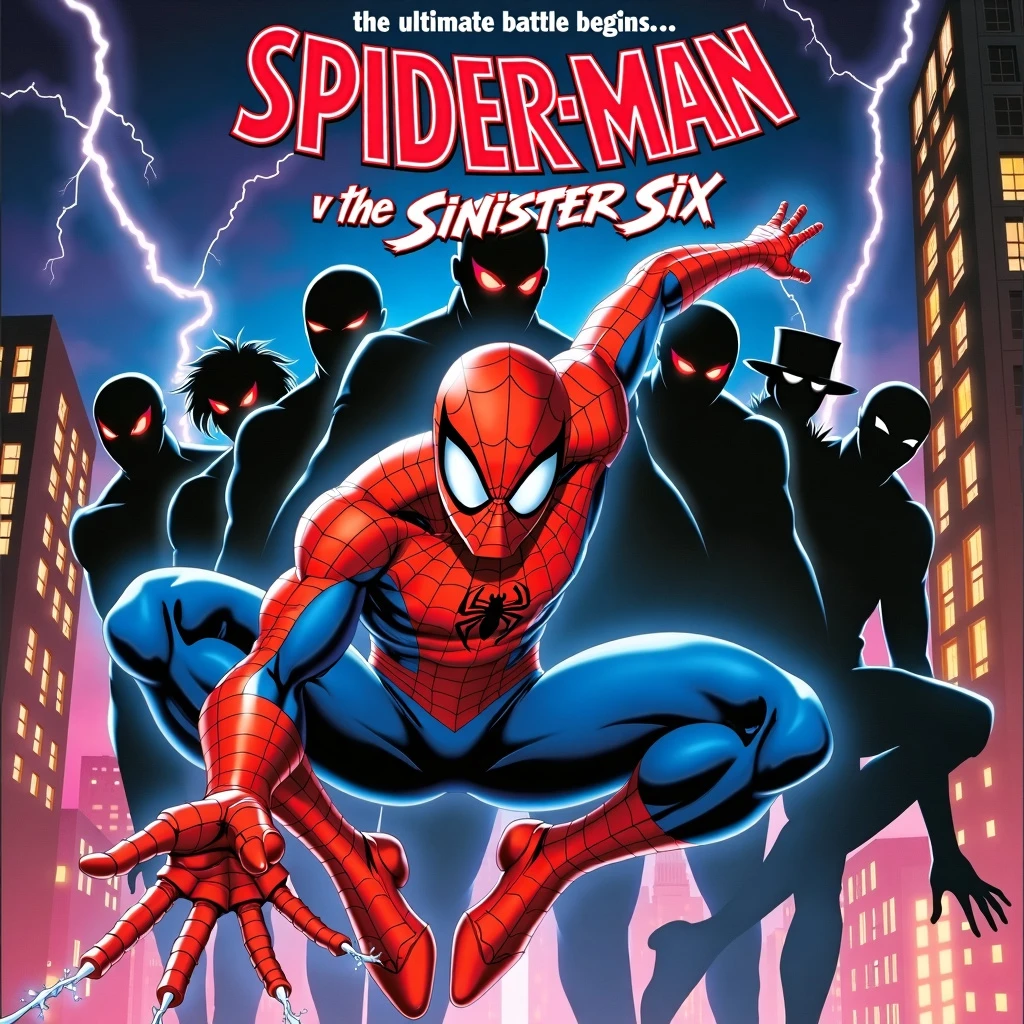The VHS cover for *Spider- Man vs. The Sinister Six* has a bold and action- packed design, typical of 1980s home video releases. At the center, Spider- Man is prominently featured, mid- swing, with his classic red- and- blue suit glistening in the light. His pose is dynamic, one arm extended forward, shooting a web toward the viewer, while his other hand grips a webline attached to an unseen building above. Behind him, the shadowy figures of the Sinister Six loom menacingly, each villain partially obscured in darkness, with only their eyes and key features highlighted. The background is a stylized, neon- lit New York City skyline at night, with a mix of vibrant pinks, purples, and blues, giving the scene a moody, almost cyberpunk atmosphere. Lightning cracks across the sky, adding a sense of urgency and danger. At the top of the cover, the title "Spider- Man vs. The Sinister Six" is displayed in bold, metallic red letters with a chrome finish, similar to the title card. The text has a slight glow, making it pop against the dark background. Below the title, a tagline reads, "The Ultimate Battle Begins. " in smaller, electrified font. The VHS spine features a smaller version of Spider- Man's image, with the title running vertically in the same metallic red font. The overall design is intense and visually striking, capturing the excitement and high stakes of the movie while appealing to fans of the 1980s superhero genre























